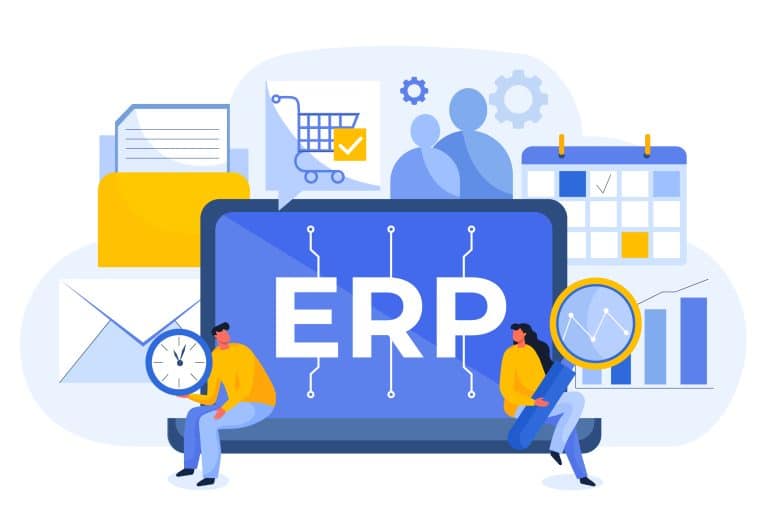To grasp the ongoing discussion around Enterprise Resource Planning (ERP) systems and Inventory Software in Aotearoa New Zealand, it’s crucial to understand the specifics of each.
What is ERP?
Enterprise Resource Planning (ERP) is a software solution that amalgamates various business operations into a single, cohesive system. By bringing together functions such as accounting, project management, procurement, and Inventory Management System, ERP ensures that all departments within a Kiwi business can access and share critical information. Its primary goal is to simplify and automate processes, thereby enhancing efficiency and productivity across the board.
What is Inventory Software?
Inventory software is a dedicated tool crafted to assist New Zealand businesses in managing their stock levels effectively. It monitors inventory quantities, orders, sales, and deliveries, facilitating a seamless movement of goods from manufacturers to warehouses, and ultimately, to retail outlets across the country.
Armed with features like real-time updates, this Inventory Management Software can automate the supply chain, helping businesses maintain just the right amount of stock. The advantages of using inventory software are plentiful, ranging from minimising the risk of stockouts and overselling to refining the order fulfilment process. In industries such as logistics and retail, where profit margins can be tight, utilising such a tool can be a significant competitive edge.
How are they Different?
Focus:
- ERP: Delivers an all-encompassing solution that connects all business operation functions.
- Inventory Software: Focuses solely on the management and tracking of inventory levels.
Capabilities:
- ERP Systems: Broad automation of business processes. Enhanced reporting and decision-making capabilities. Superior visibility across the organisation. Improved supply chain management. Collaboration features across departments.
- Inventory Software: Specialises in real-time inventory updates. Automation of specific supply chain tasks. Direct oversight of stock levels.
Benefits of ERP
The benefits of ERP systems are extensive, but some of the standout advantages for New Zealand businesses include automated and streamlined processes, improved visibility into business performance, optimised supply chain management, and enhanced collaboration with vendors and suppliers.
Automation and Streamlining Processes
ERP systems are adept at automating and streamlining business operations. They remove the need for manual inventory management, decrease the chance of human error, and offer real-time insights into inventory status. This automation not only saves time and money but also boosts visibility into operations, freeing up staff to focus on more strategic initiatives.
Streamlined Reporting and Improved Decision Making
ERP systems merge financial data with inventory information, leading to comprehensive financial reporting. Real-time inventory tracking provides precise data on inventory costs and values, while automated inventory valuation minimises errors. Additionally, cost analysis tools offer deeper insights into financial health.
Enhanced Visibility into Business Performance
ERP provides improved visibility into business performance by integrating multiple tools that gather data on various aspects of the business. Accurate business analytics and forecasting become achievable with ERP, supporting informed decision-making.
Optimised Supply Chain Management
ERPs optimise supply chain management by integrating functions such as demand and inventory tracking, manufacturing processes, Warehouse Operation, logistics, and distribution management. They utilise real-time data to suggest the most effective purchase and transfer orders, reducing the risks of stockouts and understocking.
Improved Collaboration with Vendors and Suppliers
ERP systems can bolster collaboration with vendors and suppliers. Clear communication and reporting expectations, key performance metrics, and cloud-based ERP systems with collaboration tools help forge valuable partnerships.
Benefits of Inventory Software
While ERPs offer broad business management solutions, selecting the ideal Inventory Management Solution for your New Zealand enterprise can provide specific benefits, enhancing the control and management of stock. These software solutions are typically favoured by smaller businesses due to their targeted focus and ease of use.
Automated Real-Time Tracking and Availability Updates
Inventory Management Software ensures real-time tracking and updates on stock availability. This feature prevents overselling or underselling scenarios, boosting customer satisfaction. Benefits include managing multiple warehouses, swiftly locating items, and directing order fulfilment based on proximity to the customer and stock levels.
Increased Accuracy of Inventory Counts and Orders
Inventory Management Software enhances inventory tracking and reduces mistakes, leading to more precise inventory counts and orders. Features like automated replenishment, real-time inventory tracking, inventory forecasting, and batch and serial number tracking all contribute to this precision.
Reduced Manual Labour Hours for Stocktaking & Reordering
Inventory Management Software can significantly cut down on manual labour for stocktaking and reordering. Automation eliminates the need for manual counting and tracking of inventory, resulting in time and cost savings. The software can also streamline the reordering process by automatically generating purchase orders based on predefined replenishment criteria.
Improved Customer Service with Accurate Order Fulfilment
Accurate order fulfilment elevates customer service by ensuring timely delivery and increasing customer satisfaction. Real-time inventory visibility, availability updates, and the ability to track the progress of orders all contribute to this outcome.
Better Stock Control & Forecasting Capabilities
With inventory software, businesses in New Zealand can better control their stock and enhance forecasting. Excess inventory can be reduced, and issues of understocking or overstocking can be avoided, while inventory accuracy is improved through accurate forecasting and analytics. Features like automated replenishment, real-time inventory tracking, inventory forecasting, and batch and serial number tracking enable better stock control.










